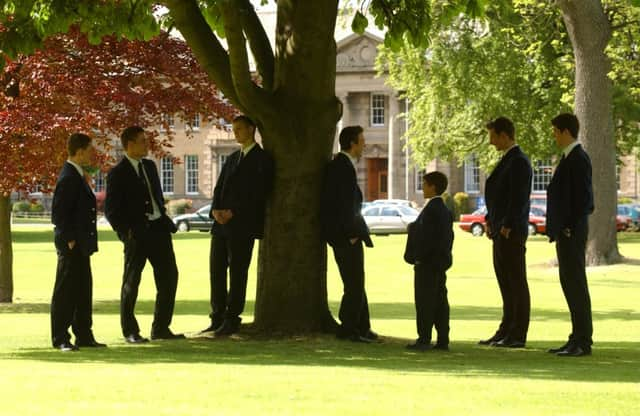Private schools do 10% better than state education


The advantage – contained in Organisation for Economic Co-operation and Development (OECD) tables on country performance – remains in place even when social and economic factors are taken into account, the statistics show.
The OECD survey also concludes that the performance gap in maths between the private and state sectors in Scotland is greater than in England.
Advertisement
Hide AdAdvertisement
Hide AdThe figures were part of a worldwide study into standards in schools, which released headline figures on proficiency in maths, reading and science.
Scotland’s performance was above average within the OECD, although all UK nations were found to be lagging well behind stellar performers in Asia. It also confirmed a large gap in attainment between children from the most advantaged and most disadvantaged backgrounds, although the gap in Scotland was less pronounced than in previous years.
The figures on the performance in the private and public sector were contained in detailed tables released by the OECD.
The Pisa study, the OECD’s Programme for International Student Assessment, uses a 1,000-point scale, with a score of 500 representing the average mark.
In maths, the overall score for Scottish pupils was 498. The study shows that, in the state sector, the figure was 495. But in the private school sector, it was 553.
In order to ensure the comparison was fair, researchers then stripped out social and economic factors.
They concluded that private school pupils still had a 27-point lead over state school children. This was much greater than in England, where private school children out-scored state school children by just 12 points, the OECD charts show.
The organisation also examined reading and science, although the figures are not adjusted for social and economic factors.
Advertisement
Hide AdAdvertisement
Hide AdThe state school sector had a score of 503, compared to a score of 563 in Scottish private schools. In science, the average in state schools was 510, compared to 570 in private schools.
The figures will add to claims that wealthier parents are able to buy their children a better education by going private.
However, the Scottish Government said that the reduction in the overall attainment gap in Scotland between rich and poor showed that schools were giving all pupils a leg up.
A Scottish Government spokesman said: “The latest Pisa survey showed that in Scotland, the attainment gap between the most advantaged and most disadvantaged school pupils has narrowed for the first time. We were also the only country in the UK to make progress in this area and the classification by the OECD of many English academies and free schools as private has undoubtedly influenced these results.”
He added: “Curriculum for Excellence, when rolled out across all age groups, will offer every young person in Scotland the benefits of a fully rounded education, giving them the best opportunity to succeed in learning, life and work.
“Over time, we expect to see further progress in tackling the attainment gap, meaning that a pupil’s background should no longer be a factor in whether or not they succeed.”
However, the OECD said the gap between the best and worst- performing pupils remained a concern.
OECD secretary-general Angel Gurria said all countries showed wide differences in performance in maths, with the poorest performing pupils the equivalent of seven years of schooling behind the best ones.
Advertisement
Hide AdAdvertisement
Hide Ad“Clearly, all countries and economies have excellent students, but few have enabled all students to excel,” he said.
On how to create the best school system, he said: “The highest-performing are those that allocate educational resources more equitably among advantaged and disadvantaged schools and that grant more autonomy over curricula and assessments to individual schools.”
He added: “A belief that all students can achieve at a high level and a willingness to engage all stakeholders – including students, through such channels as seeking their feedback on teaching practices – are hallmarks of successful school systems.”
The Pisa study also exposed major differences in the way schools are run across the UK, and in choices open to parents.
The survey asked headteachers to say how many schools in their area were competing for children. In Scotland, only 47 per cent said there were more than two other schools seeking to attract pupils along with their own. That compared with 76.9 per cent in Wales, 85.3 per cent in England and 95 per cent in Northern Ireland.
On pre-school provision, the survey found 67 per cent in Scotland had more than a year’s provision, compared with 70 per cent in England.
The survey also asked how many pupils undertook four or more hours of after school. In Scotland, 11 per cent said they did, compared to 13 per cent in Wales and England.
Best and worst
81% of pupils at Edinburgh’s Merchiston Castle, above, received A passes – though only 15 sat Highers, the rest sitting A-levels in S6.
Advertisement
Hide AdAdvertisement
Hide Ad69% of the 175 pupils who sat Highers at George Heriot’s in Edinburgh got As.
0% Not one pupil at Castlebrae Community High or Craigroyston Community High both in Edinburgh, achieved five Highers or more. 1%In 2013, Wester Hailes Education Centre moved up a notch from 0%.